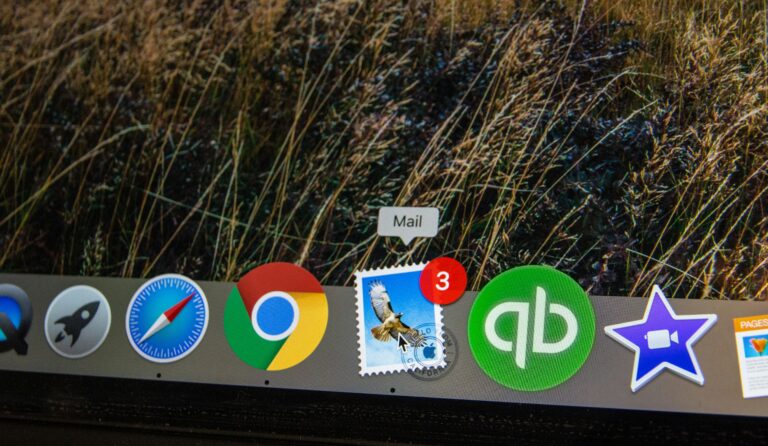Unleash a world of limitless escapades and knowledge exploration by immersing yourself in the digital universe of E-Books and Audiobooks. 📚💡 This realm not only promises a never-ending source of entertainment but also offers an infinite reservoir of wisdom, accessible with just a few clicks. Bask in the convenience of having a library at your fingertips, anywhere, anytime, and dive deep into the depths of genres and topics that cater to every interest and passion.

This post will unravel the fascinating world of E-Books and Audiobooks, spotlighting their features, benefits, and how they are revolutionizing the way we consume literature and acquire knowledge. 🌐💻 It will dissect the reasons why these digital formats are gaining rapid popularity among knowledge seekers, avid readers, and casual listeners alike. Moreover, it will shed light on how these platforms can significantly contribute to personal growth and intellectual development.
Stay tuned as we traverse through the captivating landscape of E-Books and Audiobooks, exploring the various platforms that deliver this unique experience. 🎧📖 This journey will also highlight how to maximize the advantages of these digital formats, ensuring that they fit seamlessly into your lifestyle. Prepare to embark on countless adventures, meet intriguing characters, and uncover fascinating truths, all through the power of E-Books and Audiobooks.
Understanding the E-Book and Audiobook Technology
The rapidly growing popularity of e-books and audiobooks is fueled by a sophisticated blend of digital technologies. These formats combine software engineering, multimedia processing, and data storage systems to deliver seamless reading and listening experiences across devices. Whether you’re reading a best-selling novel on an e-reader or listening to a biography on your phone, the experience is made possible through the intelligent integration of file formats, compression algorithms, UI frameworks, and cloud-based services.
At their core, e-books and audiobooks represent digital transformations of traditional content, reimagined for modern platforms and personalized user preferences.
E-Book Technology
E-books are not simply scanned images of print books—they are fully structured digital documents, often interactive and optimized for readability on a variety of screens and devices. Their development is deeply rooted in web technologies and digital publishing standards.
How E-Books Work:
- Content Structure:
Most e-books are built using HTML (HyperText Markup Language), the same language used for creating web pages. This allows for dynamic formatting of text, such as paragraphs, headings, lists, and links. - Styling and Layout:
To ensure visual consistency across different screen sizes, CSS (Cascading Style Sheets) is used to style fonts, spacing, margins, and page layout. This enables features like adjustable font sizes and background themes, which enhance the reading experience. - Interactive Features:
Advanced e-books may include embedded multimedia elements, such as images, videos, links, and annotations. Some educational e-books even support quizzes, dictionaries, and note-taking tools. - Common File Formats:
- EPUB (Electronic Publication): The most widely supported e-book format; flexible, reflowable, and open standard.
- PDF (Portable Document Format): Preserves fixed formatting; ideal for documents that must retain specific layout and design.
- MOBI and AZW: Proprietary formats used by Amazon Kindle devices, offering DRM (Digital Rights Management) support and tailored features.
- Digital Rights Management (DRM):
To protect copyright, most e-books use DRM systems that prevent unauthorized copying or sharing. These are enforced through e-reader apps or dedicated platforms like Kindle, Apple Books, or Google Play Books.
Devices and Platforms:
Apps: Software platforms like Kindle app, Apple Books, and Adobe Digital Editions allow users to read e-books across phones, tablets, and desktops.
E-Readers: Devices like Amazon Kindle, Kobo, and Nook are optimized for e-books, using e-ink displays that reduce eye strain and closely resemble printed paper.
Audiobook Technology
While e-books focus on digital text presentation, audiobooks revolve around high-quality sound engineering and voice performance. These audio versions of books offer a completely different way to experience content—by listening rather than reading—making them ideal for multitasking, commuting, or for those who prefer auditory learning.
Audiobooks are produced using a mix of professional narration, digital audio processing, and file compression techniques that balance sound quality with file size efficiency.
Key Components of Audiobook Technology:
- Digital Audio Processing:
Raw recordings of a narrator reading a book are first captured in high fidelity, then processed using digital signal processing (DSP) software. Editors apply tools to:- Reduce background noise
- Normalize volume levels
- Adjust pitch or speed, if necessary
- Remove breathing sounds or pauses
- Add optional sound effects or music beds for dramatized audiobooks
- Common Audio Formats:
- MP3 (MPEG Audio Layer III): Most popular due to wide compatibility and balanced compression.
- AAC (Advanced Audio Coding): Offers better quality at smaller file sizes; used by Apple Books and Audible.
- WMA (Windows Media Audio): Previously popular on Windows devices, though less common today.
- Delivery Methods:
- Streaming: Platforms like Audible, Google Play Books, Spotify, and Scribd allow users to stream audiobooks directly without downloading.
- Downloadable Files: For offline listening, audiobooks can be downloaded to apps or devices. This is especially useful when internet access is limited or for long trips.
- Playback Features:
- Bookmarking for easy resume.
- Speed adjustment (e.g., 0.75x to 3x) to tailor pacing to listener preference.
- Sleep timers for bedtime listening.
- Chapter navigation, similar to table-of-contents in a printed book.
Platforms and Apps:
Apple Books, Google Play Books, Spotify, and Kobo also provide audiobook selections with streaming and download options.
Audible (Amazon): Industry leader with a vast catalog and professional narrations.
Libby/OverDrive: Library-supported platforms offering free audiobook access.
The Benefits of E-Books and Audiobooks
As technology continues to reshape how we consume information, e-books and audiobooks have become cornerstones of the modern reading experience. They go beyond traditional print by offering a suite of benefits tailored to contemporary lifestyles.
Key Advantages:
Eco-Friendly and Space-Saving:
Digital libraries reduce the need for paper and storage space, contributing to more sustainable and minimalist living.
Convenience:
Carry thousands of books in your pocket. Whether you’re on a plane, commuting, or waiting in line, access to stories and knowledge is just a tap away.
Multitasking Capability:
Audiobooks allow you to enjoy literature while cooking, exercising, driving, or relaxing—making it easy to integrate books into a busy schedule.
Accessibility:
Features like adjustable font sizes, read-aloud modes, and screen-reader compatibility make e-books ideal for individuals with visual impairments or learning difficulties. Audiobooks provide inclusive options for those who prefer or require listening.
Customization and Control:
Digital formats let you control your reading or listening pace, highlight passages, take notes, or revisit chapters effortlessly.
Accessibility
One of the most profound advantages of e-books and audiobooks is their ability to break down barriers to reading and learning. They offer tools and flexibility that physical books simply cannot match.
Key Accessibility Features:
Multi-Device Syncing:
You can start reading an e-book on your tablet, switch to your phone while traveling, and pick up where you left off on a computer—all thanks to cloud synchronization across devices.
Anytime, Anywhere Access:
Unlike traditional books, which require physical presence and space, digital formats allow you to carry an entire library in your pocket. Whether you’re on a plane, in a waiting room, or on your daily commute, your favorite books are just a tap away.
Assistive Technology Integration:
E-books often include features such as adjustable text size, font style, and background color, making it easier for people with visual impairments or reading difficulties like dyslexia to customize their reading experience.
Many e-readers offer text-to-speech (TTS) capabilities, which can read the book aloud, further supporting accessibility for users with low vision or learning disabilities.
Audiobooks as Inclusive Media:
Audiobooks are especially beneficial for people who are blind or visually impaired, as well as those with mobility or cognitive challenges that make holding or reading a book difficult. Additionally, narrated storytelling can enhance comprehension for auditory learners and language students.
Convenience
The convenience offered by e-books and audiobooks is undeniable. You can read or listen to your favorite book while commuting, doing chores, or during a break at work. E-books don’t wear out or get damaged over time, and you don’t have to worry about losing them.
Versatility
E-books and audiobooks offer versatility that is hard to match. Users can easily switch between reading and listening modes, making the most of their time. Some platforms also allow users to highlight text, add notes, and even share their favorite quotes.
Choosing the Right E-Book and Audiobook Platform

There are numerous platforms offering e-books and audiobooks, but not all platforms are created equal. Here’s what you should look for when selecting a platform:
- Library size: The larger the library, the better. This ensures you have a vast selection to choose from.
- Subscription model: Some platforms offer a subscription model, allowing unlimited access to a vast library for a monthly fee, while others offer a pay-per-book model.
- Offline access: The ability to download e-books and audiobooks for offline access is a major advantage, especially for those with unreliable internet connections.
- Device compatibility: It’s important that the platform supports a wide range of devices and has an intuitive user interface.
How to Maximize Your E-Book and Audiobook Experience
In the digital age, reading and listening have evolved beyond traditional formats. E-books and audiobooks offer unparalleled convenience, accessibility, and portability, allowing you to enjoy literature, learn new skills, or explore immersive stories anytime, anywhere. Whether you’re curled up at home, commuting to work, or exercising at the gym, there are strategic ways to elevate your digital reading and listening experience.
To make the most of these formats, it’s important to focus on three core aspects: choosing the right device, optimizing your environment, and adopting smart reading or listening habits.
Choose the Right Device
While it’s possible to read e-books and listen to audiobooks on almost any smartphone, tablet, or computer, dedicated devices and accessories can significantly enhance comfort, immersion, and focus.
For E-Books:
- E-Readers (e.g., Kindle, Kobo, Nook):
- These devices are designed to simulate the feel of reading a physical book, using e-ink technology that reduces glare and eye strain.
- E-readers typically offer long battery life, lightweight portability, and adjustable backlighting for nighttime reading.
- Many support note-taking, bookmarks, and built-in dictionaries for an interactive reading experience.
- Tablets and Smartphones:
- Apps like Kindle, Apple Books, and Google Play Books make it easy to access your e-book library across devices.
- Tablets offer a vibrant display, ideal for colorful content like magazines or children’s books.
For Audiobooks:
Many audiobook apps integrate with Android Auto or Apple CarPlay, making it easy to listen on the road safely.
High-Quality Headphones:
Investing in noise-canceling or in-ear headphones can drastically improve your listening experience, especially in noisy environments.
Look for headphones with clear audio output and comfortable fit, especially for long listening sessions.
Smart Speakers or Car Systems:
Devices like Amazon Echo or Apple HomePod allow for hands-free listening at home.
Make Use of Features
Don’t forget to explore and make use of the various features offered by your e-book or audiobook platform. Features like adjustable text size, read-aloud option, bookmarks, note-taking, and highlighting can enrich your reading or listening experience.
Explore Different Genres
With the vast selection of e-books and audiobooks available, it’s a great opportunity to explore different genres and authors. You might discover a new favorite!
Conclusion
In conclusion, the world of E-books and Audiobooks has revolutionized our approach to reading and gaining knowledge. This digital realm offers unlimited adventures, facilitating endless entertainment and enrichment at our fingertips. The accessibility and convenience they offer are unparalleled, making reading more appealing to a broader audience.
The rise of E-books and Audiobooks reflects a shift in how people consume literature and information, catering to our fast-paced lifestyles. Whether you’re commuting, working out, or just relaxing at home, these digital platforms allow for a seamless integration of learning and entertainment into our daily routines.
Moreover, the vast array of genres and titles available online opens a gateway to diverse perspectives and insights. They provide an inclusive platform where everyone can find something that resonates with them, bridging gaps in understanding and fostering a global community of readers.
In essence, E-books and Audiobooks are not just changing the way we read but also how we learn, connect, and grow. They are unlocking unlimited adventures, turning every moment into an opportunity to dive into a new world, meet different characters, learn new concepts, and ultimately, expand our horizons. As we move further into the digital age, the importance and influence of these platforms are set to continue growing exponentially. Dive in and unlock your next adventure today!



